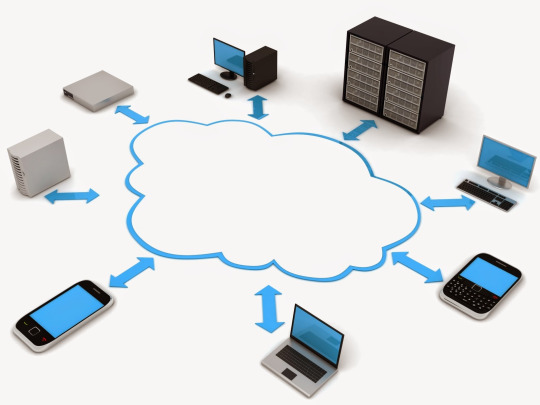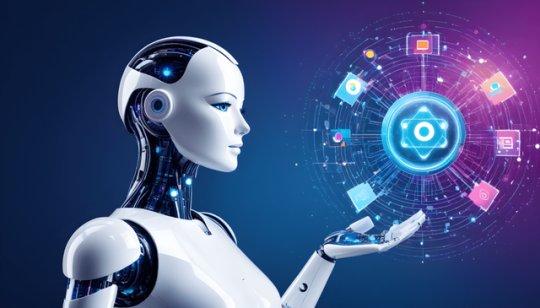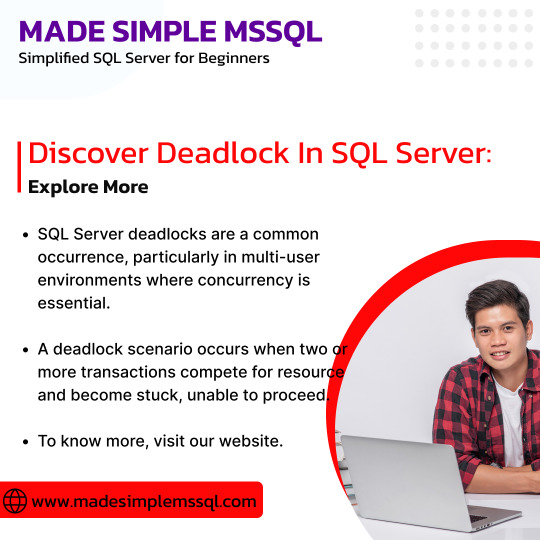#dataanalytics
Explore tagged Tumblr posts
Text
分散型データサイエンティストの事例 | Oneechanblog Podcast
youtube
#podcast#podcastclips#podcasting#podcastlife#podcastshow#podcastshorts#podcaststreamlive#podcaster#data#datascience#dataanalytics#database#datastructures#datavisualization#computerscience#Youtube
16 notes
·
View notes
Text

AI’s Role in Business Process Automation
Automation has come a long way from simply replacing manual tasks with machines. With AI stepping into the scene, business process automation is no longer just about cutting costs or speeding up workflows—it’s about making smarter, more adaptive decisions that continuously evolve. AI isn't just doing what we tell it; it’s learning, predicting, and innovating in ways that redefine how businesses operate.
From hyperautomation to AI-powered chatbots and intelligent document processing, the world of automation is rapidly expanding. But what does the future hold?
What is Business Process Automation?
Business Process Automation (BPA) refers to the use of technology to streamline and automate repetitive, rule-based tasks within an organization. The goal is to improve efficiency, reduce errors, cut costs, and free up human workers for higher-value activities. BPA covers a wide range of functions, from automating simple data entry tasks to orchestrating complex workflows across multiple departments.
Traditional BPA solutions rely on predefined rules and scripts to automate tasks such as invoicing, payroll processing, customer service inquiries, and supply chain management. However, as businesses deal with increasing amounts of data and more complex decision-making requirements, AI is playing an increasingly critical role in enhancing BPA capabilities.
AI’s Role in Business Process Automation
AI is revolutionizing business process automation by introducing cognitive capabilities that allow systems to learn, adapt, and make intelligent decisions. Unlike traditional automation, which follows a strict set of rules, AI-driven BPA leverages machine learning, natural language processing (NLP), and computer vision to understand patterns, process unstructured data, and provide predictive insights.
Here are some of the key ways AI is enhancing BPA:
Self-Learning Systems: AI-powered BPA can analyze past workflows and optimize them dynamically without human intervention.
Advanced Data Processing: AI-driven tools can extract information from documents, emails, and customer interactions, enabling businesses to process data faster and more accurately.
Predictive Analytics: AI helps businesses forecast trends, detect anomalies, and make proactive decisions based on real-time insights.
Enhanced Customer Interactions: AI-powered chatbots and virtual assistants provide 24/7 support, improving customer service efficiency and satisfaction.
Automation of Complex Workflows: AI enables the automation of multi-step, decision-heavy processes, such as fraud detection, regulatory compliance, and personalized marketing campaigns.
As organizations seek more efficient ways to handle increasing data volumes and complex processes, AI-driven BPA is becoming a strategic priority. The ability of AI to analyze patterns, predict outcomes, and make intelligent decisions is transforming industries such as finance, healthcare, retail, and manufacturing.
“At the leading edge of automation, AI transforms routine workflows into smart, adaptive systems that think ahead. It’s not about merely accelerating tasks—it’s about creating an evolving framework that continuously optimizes operations for future challenges.”
— Emma Reynolds, CTO of QuantumOps
Trends in AI-Driven Business Process Automation
1. Hyperautomation
Hyperautomation, a term coined by Gartner, refers to the combination of AI, robotic process automation (RPA), and other advanced technologies to automate as many business processes as possible. By leveraging AI-powered bots and predictive analytics, companies can automate end-to-end processes, reducing operational costs and improving decision-making.
Hyperautomation enables organizations to move beyond simple task automation to more complex workflows, incorporating AI-driven insights to optimize efficiency continuously. This trend is expected to accelerate as businesses adopt AI-first strategies to stay competitive.
2. AI-Powered Chatbots and Virtual Assistants
Chatbots and virtual assistants are becoming increasingly sophisticated, enabling seamless interactions with customers and employees. AI-driven conversational interfaces are revolutionizing customer service, HR operations, and IT support by providing real-time assistance, answering queries, and resolving issues without human intervention.
The integration of AI with natural language processing (NLP) and sentiment analysis allows chatbots to understand context, emotions, and intent, providing more personalized responses. Future advancements in AI will enhance their capabilities, making them more intuitive and capable of handling complex tasks.
3. Process Mining and AI-Driven Insights
Process mining leverages AI to analyze business workflows, identify bottlenecks, and suggest improvements. By collecting data from enterprise systems, AI can provide actionable insights into process inefficiencies, allowing companies to optimize operations dynamically.
AI-powered process mining tools help businesses understand workflow deviations, uncover hidden inefficiencies, and implement data-driven solutions. This trend is expected to grow as organizations seek more visibility and control over their automated processes.
4. AI and Predictive Analytics for Decision-Making
AI-driven predictive analytics plays a crucial role in business process automation by forecasting trends, detecting anomalies, and making data-backed decisions. Companies are increasingly using AI to analyze customer behaviour, market trends, and operational risks, enabling them to make proactive decisions.
For example, in supply chain management, AI can predict demand fluctuations, optimize inventory levels, and prevent disruptions. In finance, AI-powered fraud detection systems analyze transaction patterns in real-time to prevent fraudulent activities. The future of BPA will heavily rely on AI-driven predictive capabilities to drive smarter business decisions.
5. AI-Enabled Document Processing and Intelligent OCR
Document-heavy industries such as legal, healthcare, and banking are benefiting from AI-powered Optical Character Recognition (OCR) and document processing solutions. AI can extract, classify, and process unstructured data from invoices, contracts, and forms, reducing manual effort and improving accuracy.
Intelligent document processing (IDP) combines AI, machine learning, and NLP to understand the context of documents, automate data entry, and integrate with existing enterprise systems. As AI models continue to improve, document processing automation will become more accurate and efficient.
Going Beyond Automation
The future of AI-driven BPA will go beyond automation—it will redefine how businesses function at their core. Here are some key predictions for the next decade:
Autonomous Decision-Making: AI systems will move beyond assisting human decisions to making autonomous decisions in areas such as finance, supply chain logistics, and healthcare management.
AI-Driven Creativity: AI will not just automate processes but also assist in creative and strategic business decisions, helping companies design products, create marketing strategies, and personalize customer experiences.
Human-AI Collaboration: AI will become an integral part of the workforce, working alongside employees as an intelligent assistant, boosting productivity and innovation.
Decentralized AI Systems: AI will become more distributed, with businesses using edge AI and blockchain-based automation to improve security, efficiency, and transparency in operations.
Industry-Specific AI Solutions: We will see more tailored AI automation solutions designed for specific industries, such as AI-driven legal research tools, medical diagnostics automation, and AI-powered financial advisory services.
AI is no longer a futuristic concept—it’s here, and it’s already transforming the way businesses operate. What’s exciting is that we’re still just scratching the surface. As AI continues to evolve, businesses will find new ways to automate, innovate, and create efficiencies that we can’t yet fully imagine.
But while AI is streamlining processes and making work more efficient, it’s also reshaping what it means to be human in the workplace. As automation takes over repetitive tasks, employees will have more opportunities to focus on creativity, strategy, and problem-solving. The future of AI in business process automation isn’t just about doing things faster—it’s about rethinking how we work all together.
Learn more about DataPeak:
#datapeak#factr#technology#agentic ai#saas#artificial intelligence#machine learning#ai#ai-driven business solutions#machine learning for workflow#ai solutions for data driven decision making#ai business tools#aiinnovation#digitaltools#digital technology#digital trends#dataanalytics#data driven decision making#data analytics#cloudmigration#cloudcomputing#cybersecurity#cloud computing#smbs#chatbots
2 notes
·
View notes
Text
What is Cloud Computing ?

Cloud computing has become a widely discussed topic in recent years, but explaining it in simple terms to someone without a background in computer science can be challenging. Allow me to break it down for you.
Cloud computing is a method of storing and accessing data and programs over the internet, rather than keeping them on your personal computer or mobile device. To illustrate this, let's consider online email services like Gmail or Outlook. When you use these services, you can access your emails from anywhere because they are stored in the cloud. This means you don't need to install any special software or save your messages on your hard drive. Instead, your emails are stored on remote servers owned by companies like Google or Microsoft. You can access them from any device connected to the internet, regardless of your location.
Understanding Servers in the Cloud
Now, let's delve into the concept of servers in the cloud.
The data stored in the cloud is saved on physical servers, which are powerful computers capable of storing and processing vast amounts of information. These servers are typically housed in data centers, which are specialized facilities that accommodate thousands of servers and other equipment. Data centers require significant power, cooling, security, and connectivity to operate efficiently and reliably.

Microsoft and Google are two of the largest cloud providers globally, and they have data centers located in various regions and continents. Here are some examples of where their data centers are located, according to search results:
Microsoft has data centers in North America, South America, Europe, Asia, Africa, and Australia.
Google has data centers in North America, South America, Europe, and Asia.
#codeblr#code#javascript#java development company#studyblr#progblr#programming#comp sci#web design#web developers#web development#website design#webdev#website#tech#html css#learn to code#cloud computing#datascience#dataanalytics
50 notes
·
View notes
Text
𝐓𝐨𝐩 5 𝐌𝐮𝐬𝐭-𝐊𝐧𝐨𝐰 𝐃𝐚𝐭𝐚 𝐒𝐜𝐢𝐞𝐧𝐜𝐞 𝐓𝐨𝐨𝐥𝐬 – 2025 𝐄𝐝𝐢𝐭𝐢𝐨𝐧!
Looking to level up your data science skills? These 5 must-know tools are essential for every data scientist in 2025! From data wrangling to machine learning, these tools will take your projects to the next level. 💡📊
Watch - https://youtube.com/shorts/n-hNExa09sI
Which data science tool do YOU swear by? Drop your thoughts below! ⬇️
🔔 Subscribe for more data science tips & trends!
#DataScienceTools#DataScience#MachineLearning#AI#DataAnalytics#TechTools#DataVisualization#BigData#DataAnalysis#TechTrends
2 notes
·
View notes
Text
Artificial Intelligence in Digital Marketing: Definition and Tools

AI in digital marketing refers to employing intelligent technologies to enhance how businesses engage with and sell to their customers. Assists with data management, automation, customization, and refinement of campaigns. But what exactly does AI do in marketing? It uses machine learning, data analysis, and natural language processing to perform tasks faster and more accurately than humans.
Many make use of AI to simplify marketing. Customer service chatbots respond to clients in seconds. Tools using predictive analytics make it easier for businesses to grasp future shifts. Some programs are capable of generating content for blogs, emails, and even product descriptions. Messages intended for particular customers can be tailored through personalization platforms, making them more appealing. Marketing automation tools streamline tedious processes such as email dispatching and advertising, thereby cutting down on time and effort.
AI enhances digital ads as well. It modifies cost-per-click bids, targets audiences, and adjusts creatives simultaneously in order for businesses to derive the most benefit. Sentiment analysis tools automatically filter and analyze social media channels and online reviews to assess client’s’ perceptions. Customer segmentation tools analyze persona’s behavior to aggregate them into more manageable groups, thus enhancing campaign efficiency.
What are the advantages? AI saves labor in completing repetitive tasks. It provides businesses with comprehensive insights, assisting in making better decisions. It delivers content at scale and enhances the customer experience by providing tailored suggestions. It even has the capacity to determine trends, which is advantageous for businesses.
AI can, however, contain imperfections. If an algorithm is trained using biased data, it may contain biases. Misinformation in AI-generated content can lead to erroneous information being disseminated to customers. There are issues of privacy and security with a significant amount of data. Some people are concerned with the issue of transparency—who owns the content generated by AI?
AI is evolving in digital marketing, creating new opportunities and difficulties at the same time. To remain relevant in today's society, engaging with professionals is the best way to go. PLUS27digital specializes in AI-based marketing strategy development that deliver incredible outcomes. Would you like to learn how AI could improve your business? Let's have a discussion.
#AI#ArtificialIntelligence#DigitalMarketing#MarketingTech#MachineLearning#NLP#MarketingStrategy#MarketingAutomation#BusinessGrowth#Chatbots#PredictiveAnalytics#Personalization#DataAnalytics#ContentMarketing#AdOptimization#CustomerInsights#AIForBusiness#MarketingInnovation#SmartMarketing#AIContent#AISEO#DigitalTransformation#MarketingTrends#DataPrivacy#AIEthics#OnlineMarketing#SocialMediaMarketing#SEO#EcommerceMarketing#StartupMarketing
2 notes
·
View notes
Text
Pattern Recognition

🔍 Pattern analysis reveals 78% of containment failures follow predictable degradation sequences. Standard protocols miss critical precursor signals entirely.
#SCP#ContainmentBreach#PatternRecognition#AnalogHorror#Worldbuilding#BlackSwanLabs#DataAnalytics#ARG#Paranormal#NarrativeDesign
2 notes
·
View notes
Text

Early Bird Discount – 15% Off on Data Science, Machine Learning & AI!
Enroll now and save 15% on our Data Science, Machine Learning, and AI courses. Grab this limited-time offer and start your journey toward a successful tech career today!
For more information on the Data Science & Machine Learning course, visit the 1stepgrow website:
🔗 1stepgrow.com
📧 Contact: [email protected]
📞 Phone: 8951240606
5 notes
·
View notes
Text
ChatGPT vs DeepSeek: An Inclusive Comparison
Although both are AI-generated tools. Everyone already knows that ChatGPT is mostly used for conversational works whereas DeepSeek is used for data analysis, Btw it is new, it is currently being launched in China. So let's see ChatGPT vs DeepSeek: An Inclusive Comparison throughout this Blog.
2 notes
·
View notes
Video
tumblr
แพรวหัวจะปวด Swift 2023 ใหม่ จะมาอีกแล้วหรอ by ซูซูกิ พะแพรว ช๊อป Via Flickr: สนใจสั่งจองซูซูกิทุกรุ่น ทักหาเซลล์แพรวนะคะ ☎️ 091-765-7786 เมมเบอร์ไลน์ขึ้นจ้า แอ๊ดไลน์คลิ๊ก 👉 line.me/ti/p/PnJryN3jQo Facebook เพจ 👉 www.facebook.com/Suzukisale0011/ Website 👉https://suzuki9199.blogspot.com/?view=flipcard แผนที่โชว์รูม ซูซูกิ ราชเทวี สี่แยกอุรพงษ์ 👉 goo.gl/maps/6vnL9JV2p3WyKZ817 benmeedee1.wixsite.com/my-site/blog
#suzuki#suzukicar#Kairod24#Kaidee#cfao#One2car#ciaz#Pantipmarket#Traderod#Chobrod#berline#Thaicar#BestCar#cars#sedan#sales#Shopee#dataanalytics#researchanalyst#jato#india#ERTIGA#CELERIO#SWIFT#ford#laser#keepgrowing#glassrailing#carbide#flickr
7 notes
·
View notes
Text
instagram
ou can become a data analyst ⤵️📈📊💯 Here’s what you need to do: - believe in yourself - learn Excel -learn SQL - learn Tableau - build Portfolio - update Linkedin - optimize Resume - Use Network -apply for jobs That’s the way. . . .
#data#dataanalyst#dataanalytics#analyst#analytics#workfromhome#codinglife#tech#teknoloji#programming#datascience#programmer#python#machinelearning#artificialintelligence#deeplearning#code#ai#Instagram
5 notes
·
View notes
Text
Scope Computers
Unlock Your Future with Data Science!
Master data analysis, visualization 📊, and machine learning 🤖 with hands-on training and real-world projects 🚀. Gain in-demand skills to access high-paying careers 💼 and solve complex problems using data-driven insights. Start today and lead the digital revolution! 🌟

#scopecomputers#learndatascience#datascientist#machinelearning#datascience#python#learning#data#dataanalytics#statistics#artificialintelligence#programming#learnmachinelearning#coding#deeplearning#programmer
2 notes
·
View notes
Text
SQL Server deadlocks are a common phenomenon, particularly in multi-user environments where concurrency is essential. Let's Explore:
https://madesimplemssql.com/deadlocks-in-sql-server/
Please follow on FB: https://www.facebook.com/profile.php?id=100091338502392

#technews#microsoft#sqlite#sqlserver#database#sql#tumblr milestone#vpn#powerbi#data#madesimplemssql#datascience#data scientist#datascraping#data analytics#dataanalytics#data analysis#dataannotation#dataanalystcourseinbangalore#data analyst training#microsoft azure
5 notes
·
View notes
Text
How can startups benefit from analytics?
Startups can leverage analytics to navigate complex market challenges by gaining insights into customer behaviors, operational efficiency, and financial management. Data-driven tools enable them to make informed decisions, track performance, and ensure data accuracy and security as they scale, fostering a strong foundation for innovation and strategic growth read more...

2 notes
·
View notes
Text
Free R Programming Course – Learn Data Skills and Earn a Certificate! 🚀
Free R Programming Course – Learn Data Skills and Earn a Certificate!
Are you looking to dive into data science or add a powerful programming language to your skill set? This Free R Programming Course is exactly what you need! 🖥️📊
Here’s what’s included:
7 hours of self-paced video lessons
A Completion Certificate for your resume and LinkedIn
90 days of access to all course content
Whether you’re a beginner or just wanting to boost your data skills, this course covers it all—from foundational concepts to data handling, visualization, and more.
👉 Ready to get started?
Free R Programming Course with Certificate | Start Now

#rprogramming#datascience#learntocode#free course#data analysis#programming#futureready#certification course#dataanalytics#codingcommunity
3 notes
·
View notes
Text
Python for Data Science: From Beginner to Expert – A Complete Guide!
Python has become the go-to language for data science, thanks to its flexibility, powerful libraries, and strong community support. In this video, we’ll explore why Python is the best choice for data scientists and how you can master it—from setting up your environment to advanced machine learning techniques.
🔹 What You'll Learn:
✅ Why Python is essential for data science
✅ Setting up Python and key libraries (NumPy, Pandas, Matplotlib) ✅ Data wrangling, visualization, and transformation
✅ Building machine learning models with Scikit-learn
✅ Best practices to enhance your data science workflow 🚀 Whether you're a beginner or looking to refine your skills, this guide will help you level up in data science with Python. 📌 Don’t forget to like, subscribe, and hit the notification bell for more data science and Python content!
youtube
#python#datascience#machinelearning#ai#bigdata#deeplearning#technology#programming#coding#developer#pythonprogramming#pandas#numpy#matplotlib#datavisualization#ml#analytics#automation#artificialintelligence#datascientist#dataanalytics#Youtube
3 notes
·
View notes
Text
Data Professionals: Want to Stand Out?
If you're a Data Engineer, Data Scientist, or Data Analyst, having a strong portfolio can be a game-changer.
Our latest blog dives into why portfolios matter, what to include, and how to build one that shows off your skills and projects. From data pipelines to machine learning models and interactive dashboards, let your work speak for itself!
#DataScience#DataEngineering#TechCareers#DataPortfolio#CareerTips#MachineLearning#DataAnalytics#CodingLife#ai resume#ai resume builder#airesumebuilder
2 notes
·
View notes